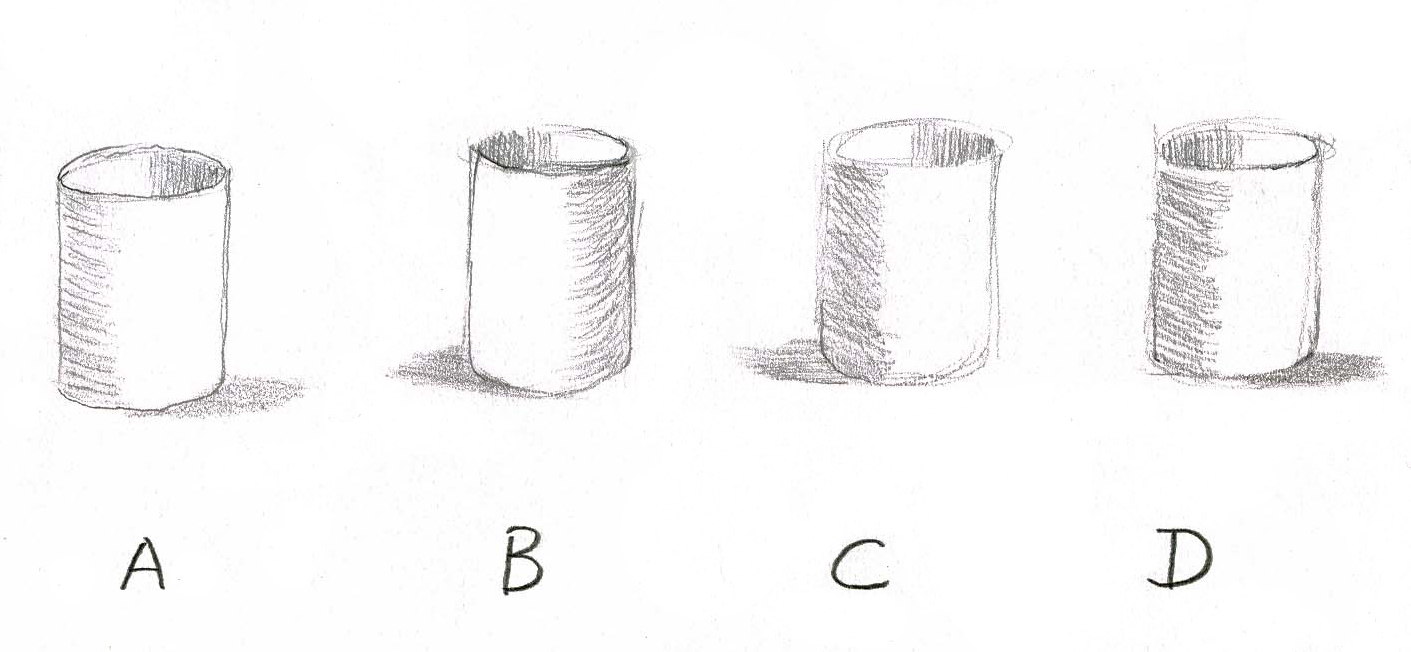Chapter 1 | CONVEX AND CONCAVE
Shadow in drawings is used, among other things, to make shapes appear three-dimensional, with curves, concave and convex parts. It is best to practice that first with fine lines (hatching/shading). With more hatches/stripes on top of each other and pressing a little harder, the shadow gets darker.
Exercise 1: try to draw this vase and peanut (in its shell) with shadow. Note that the stripes on the peanut are curved to show the round shape better.
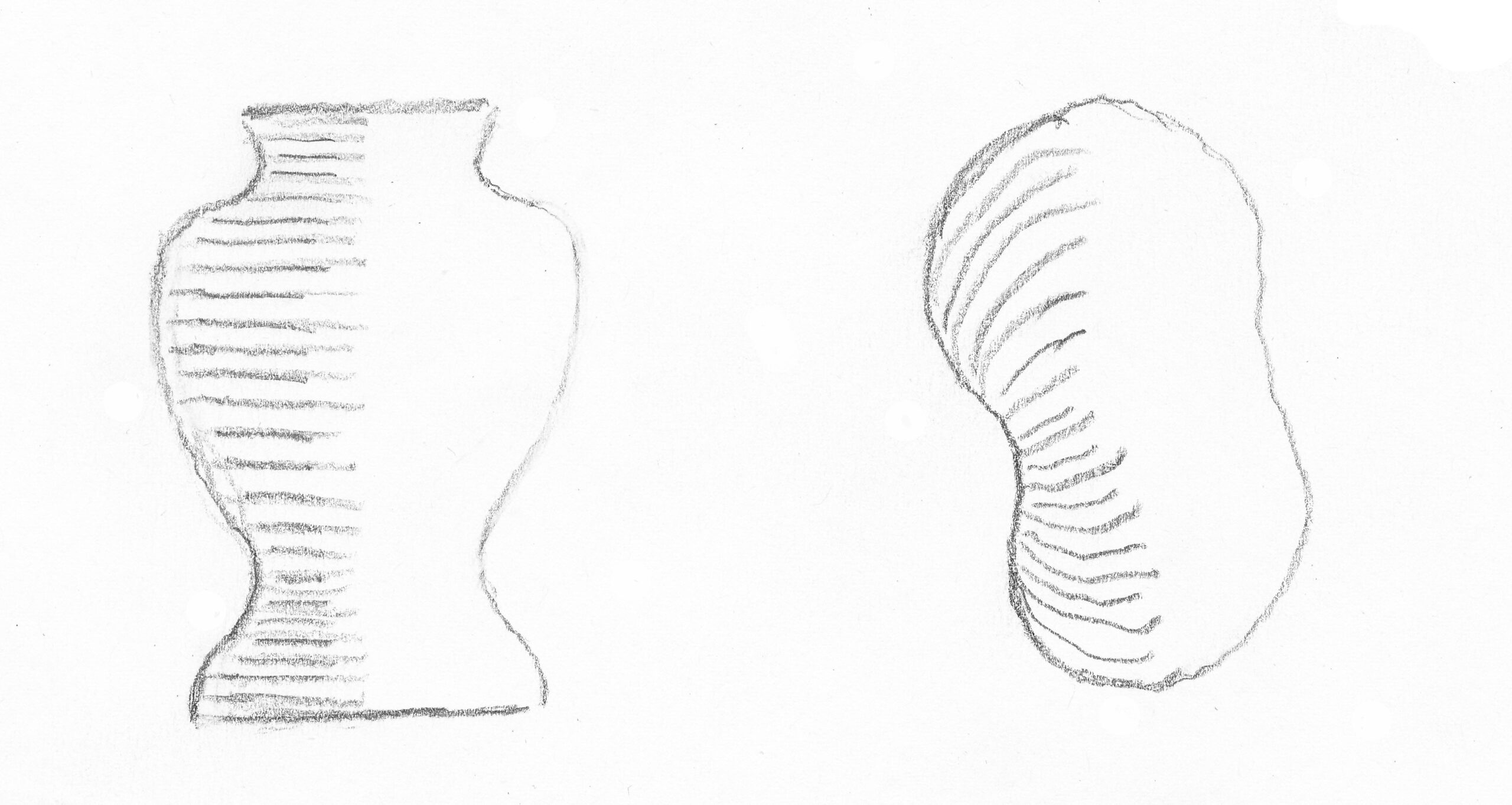
Shadow with side light from right
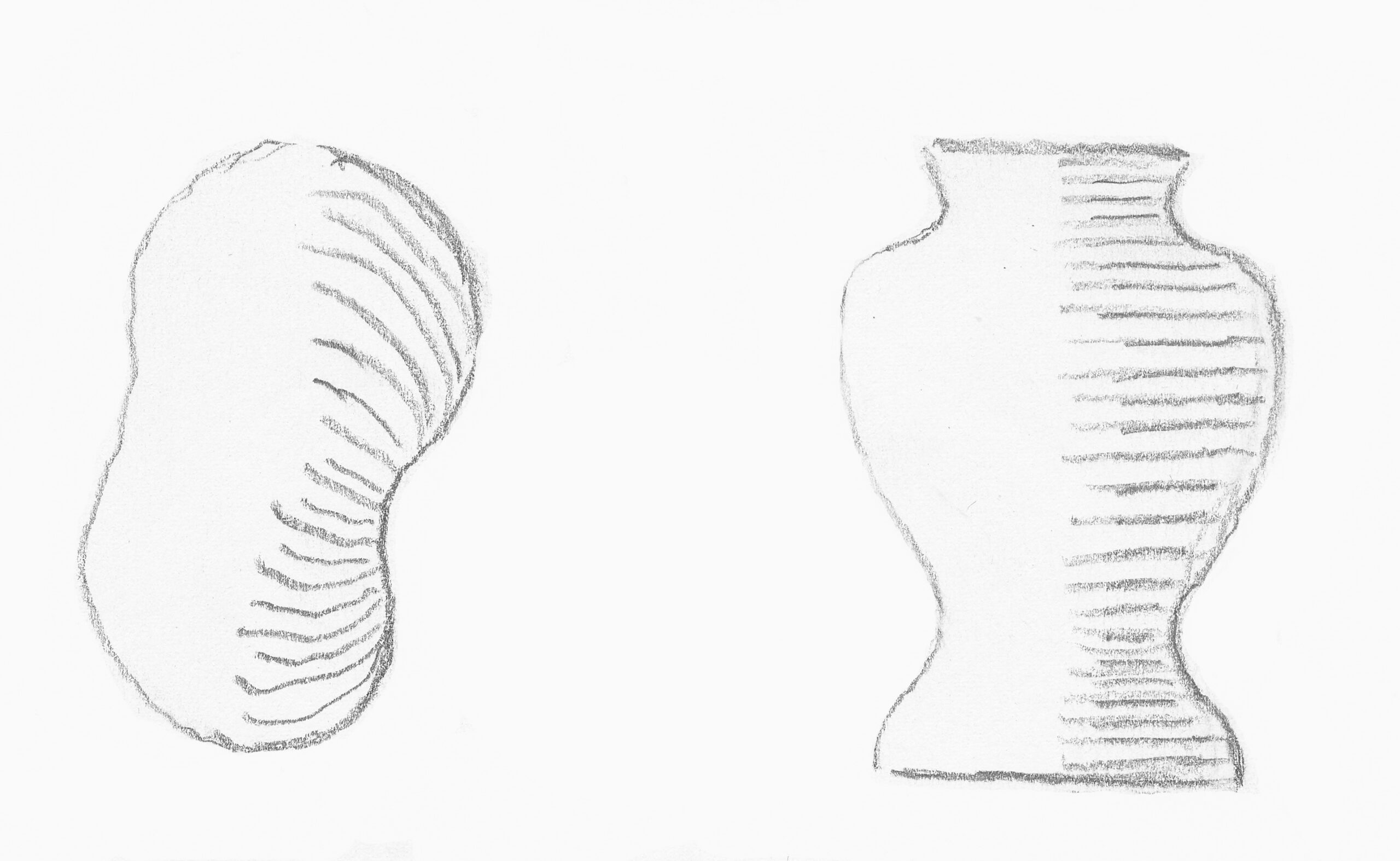
Shadow with side light from left
Another way is to draw gently with (the side of) your pencil tip. To make the shadow darker, press a little harder with your pencil. Swiping with your fingers or a cloth is nice and fast, but the shadow quickly becomes blotchy and you have less control. With angular shapes like a block, the edge of the shadow is more clear then with round objects.
Exercise 2: Draw the shape of both blocks as lightly as possible (so no hard lines anywhere). Then draw the shadow side.

Blocks with shadow
In round shapes such as a sphere, the boundary between light and shadow is blurred (soft focus or ‘sfumato’). The darkest part of the shadow is in the middle of the shadow (core shadow) and not at the edges. On the light side, the outline of the sphere remains as light as possible. You can also use this soft way of drawing shadows for other drawings (here a small circular portrait).
Exercise 3: Try drawing both spheres with shadow. Try to do it only with your pencil and don’t swipe the shadow with your fingers.
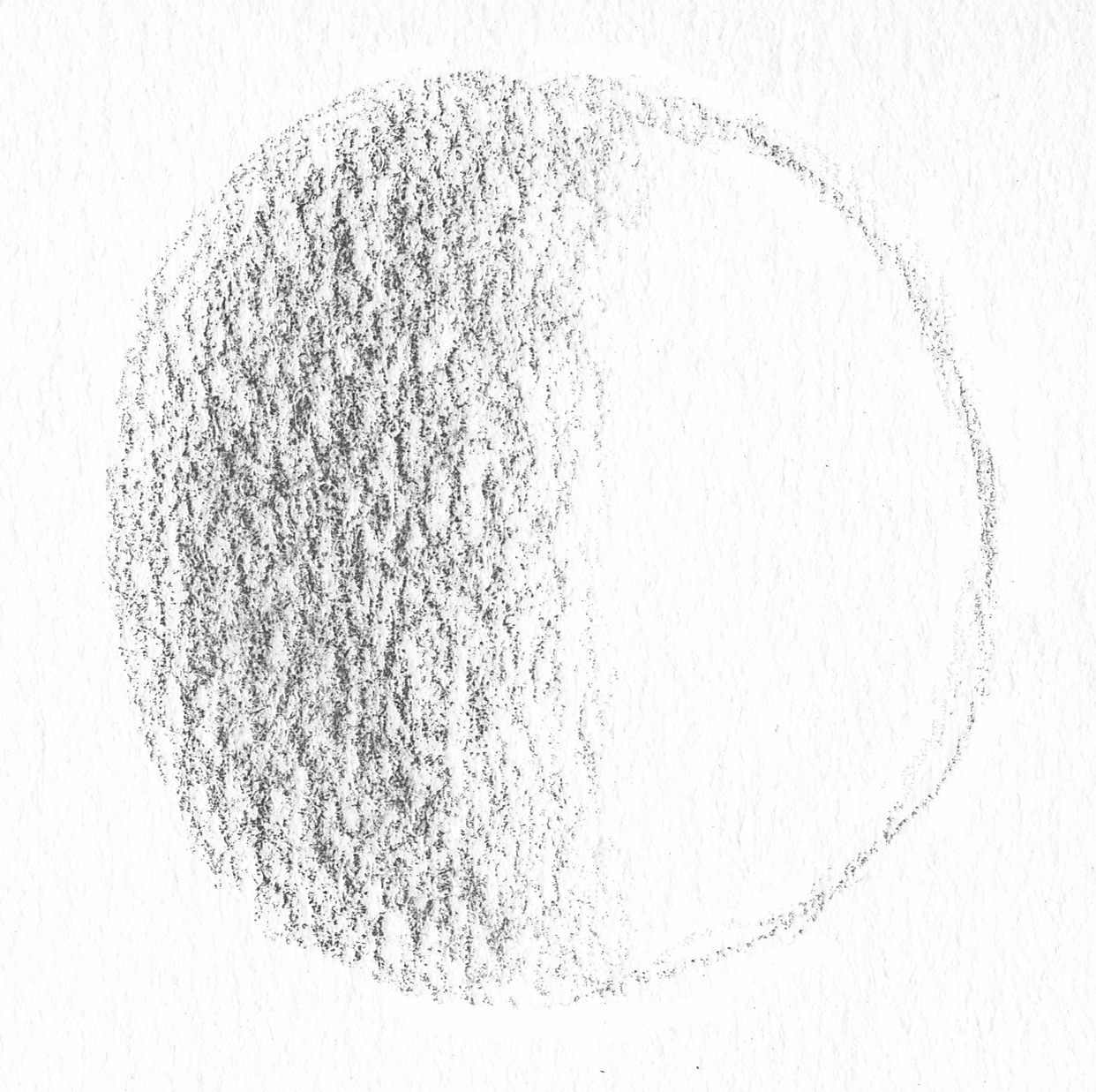
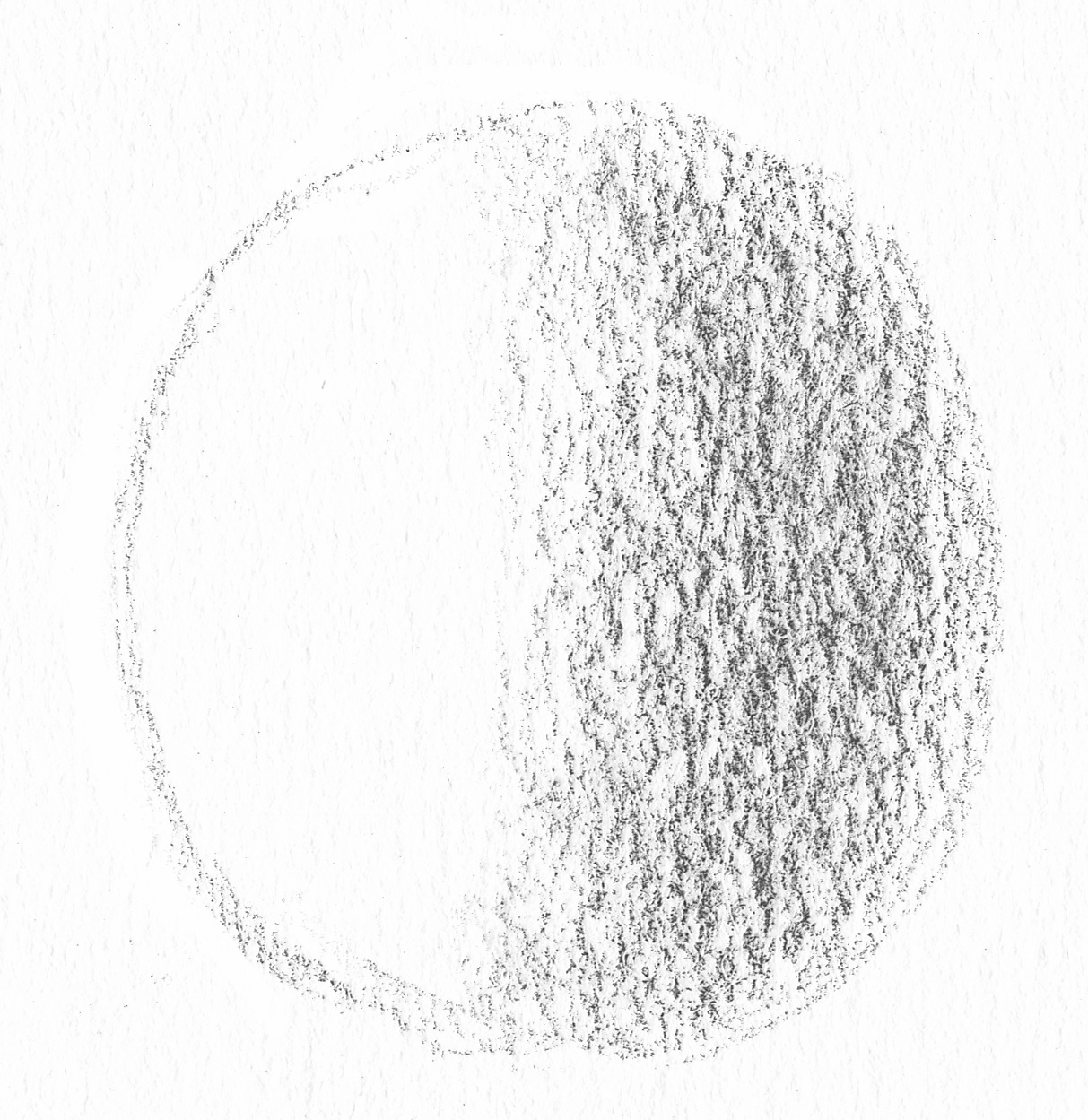
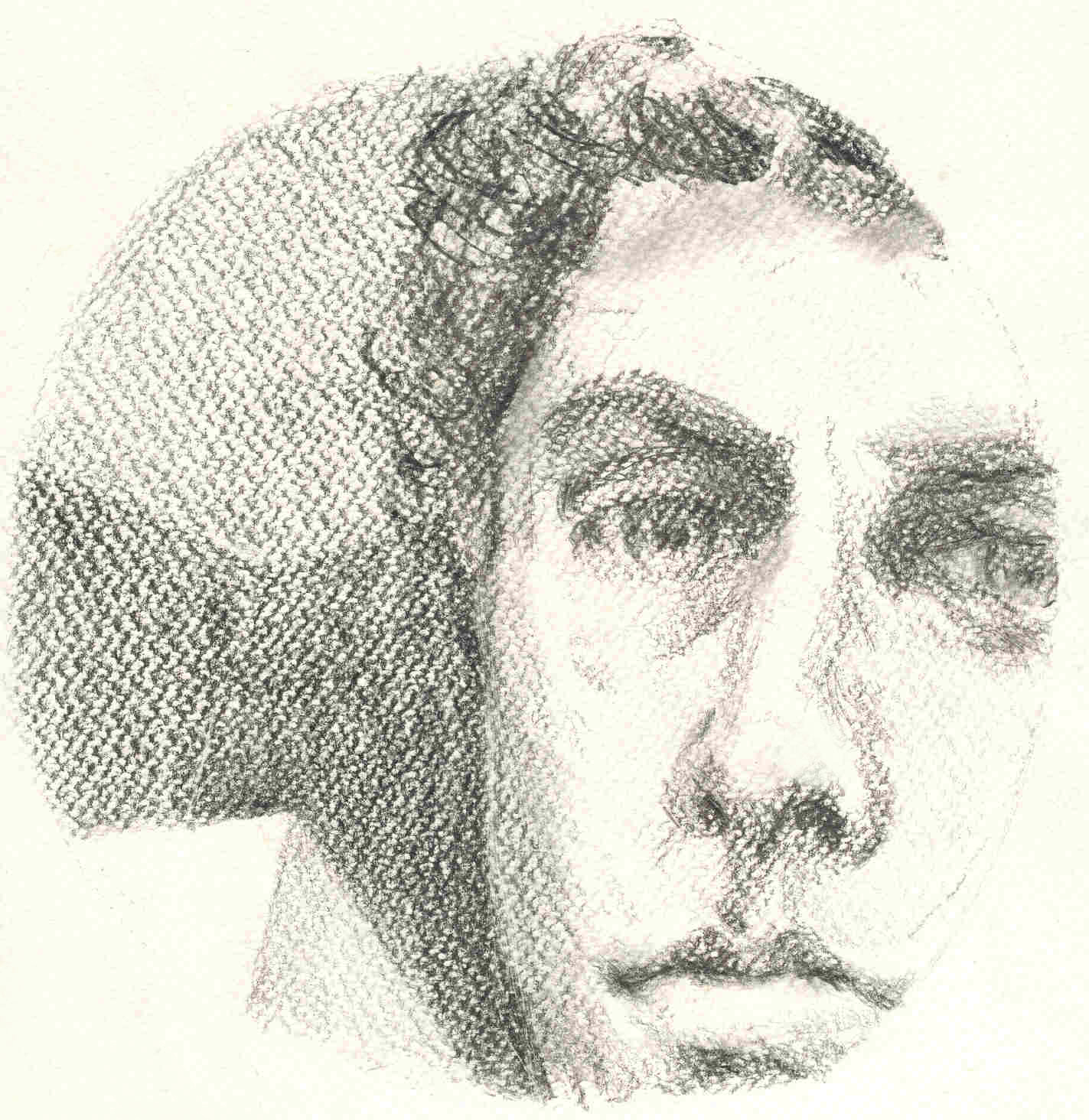

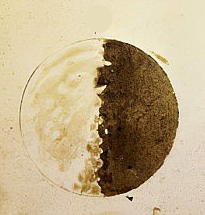
Exercise 5: Try to draw this soft focus bagel. Start the shadows very softly, possibly with the side of your pencil tip.
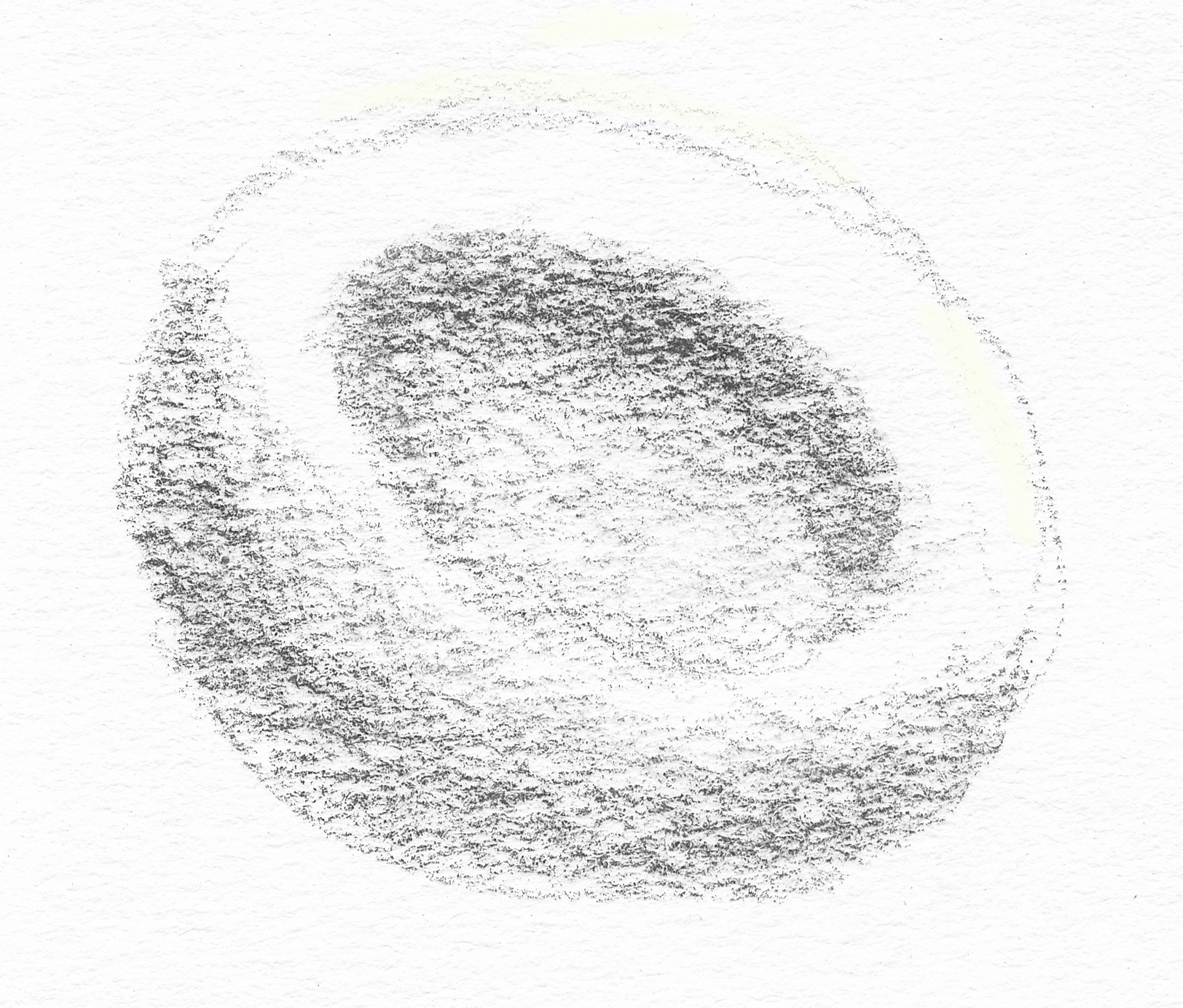
QUESTION: in which of the following hollow tubes does the shade match? Only one of them is right! The solution is found in chapter 4.
